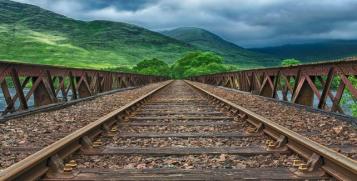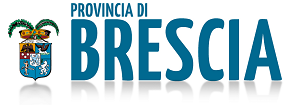Brescia-Iseo-Edolo, si viaggerà a idrogeno

La Provincia di Brescia, è lead partner (capofila) del progetto e-MOPOLI (Electro MObility as driver to support POLicy Instruments for sustainable mobility), che promuove modelli di mobilità elettrica, sistemi di trasporto, di infrastrutture e di servizi per la mobilità a basse emissioni di CO2 e di combustibili alternativi, come l'idrogeno, che contribuiscono alla decarbonizzazione e quindi a ridurre l'inquinamento.
Il progetto H2iseO mira a realizzare una mobilità ferroviaria esclusivamente a idrogeno e trasformare la Valcamonica nella prima “hydrogen valley” italiana.
Nato dalla partnership tra FMN e Trenord, il progetto H2iseO punta alla realizzazione di una mobilità esclusivamente a idrogeno sulla linea ferroviaria Brescia-Iseo-Edolo, che attraversa la Valcamonica, che punta a diventare la prima hydrogen valley d’Italia. Il progetto riguarda la realizzazione di due interventi fondamentali:
- l’acquisto iniziale di 6 treni alimentati a idrogeno, con l’opzione per la fornitura di altri 8, in sostituzione della flotta di 14 treni a motore diesel, che circolano attualmente sulla tratta Brescia-Iseo-Edolo. L’investimento è stato stimato in oltre 160 milioni. I primi di questi convogli, prodotti dalla società Alstom, saranno consegnati entro il 2023 e saranno affidati, mediante locazione, a Trenord.
- la realizzazione di centrali per la produzione di idrogeno, destinato inizialmente ai nuovi convogli ad energia pulita. Il primo impianto di produzione, stoccaggio e distribuzione di idrogeno sarà realizzato da FNM ad Iseo tra il 2021 e il 2023.
La produzione di idrogeno farà ricorso inizialmente alla tecnologia cosiddetta Steam Methane Reforming (SMR), da metano/biometano, con cattura e stoccaggio della CO2 prodotta, per la produzione di “idrogeno blu”.
Tuttavia, entro il 2025 saranno realizzati ulteriori impianti di produzione e distribuzione di idrogeno da elettrolisi (il cosiddetto idrogeno verde) lungo il tracciato della ferrovia, in partnership con operatori energetici, con cui FNM sta definendo un accordo.
Infine, entro il 2025, è previsto di applicare la soluzione idrogeno al trasporto pubblico locale, con la possibilità di aprire ulteriormente all’utilizzo da parte della logistica merci e/o privata.
Le fonti di questo testo sono gli articoli riportati in Collegamenti esterni e Allegati.
H2 mobility for the Brescia-Iseo-Edolo railway (English version)
The H2iseo project aims to achieve a hydrogen-powered railway mobility and transform Valcamonica into the first Italian "hydrogen valley".
Born from the partnership between FMN (second biggest Italian railway operator) and Trenord (a company operating in the passenger rail transport sector of the Lombardy Region), the H2iseO project aims to realize a hydrogen mobility (H2 mobility) on the railway line Brescia-Iseo-Edolo, crossing Valcamonica, an area which aims to become the first Italian “Hydrogen Valley”. The project concerns the implementation of two fundamental interventions:
- The initial purchase of 6 hydrogen-powered trains, with the option to supply other 8, replacing the fleet of 14 diesel-powered trains, which currently run on the Brescia-Iseo-Edolo route. The investment was estimated at over 160 million. The first of these convoys, produced by Alstom, will be delivered by 2023 and will be entrusted, by lease, to Trenord.
- The realization of power stations for the production of hydrogen. The first hydrogen production, storage and distribution plant will be built by FNM in Iseo between 2021 and 2023.
The production of hydrogen will initially rely on the so-called Steam Methane Reforming (SMR) technology, from methane/biomethane, with capture and storage of CO2 produced, for the production of "blue hydrogen".
However, by 2025, further plants will be built for the production and distribution of hydrogen by electrolysis (the so-called green hydrogen) along the track of the railway, in partnership with energy operators, with which FNM is defining an agreement.
Lastly, by 2025, it is planned to apply the hydrogen solution to local public transport, with the possibility of further opening to use by freight and/or private logistics.
The sources of this text are the articles listed in External links and Attachments.
.
Allegati
Giornale di Brescia - Articolo di Enrico Mirani - 27/11/2020
Note: scarica l'articolo

